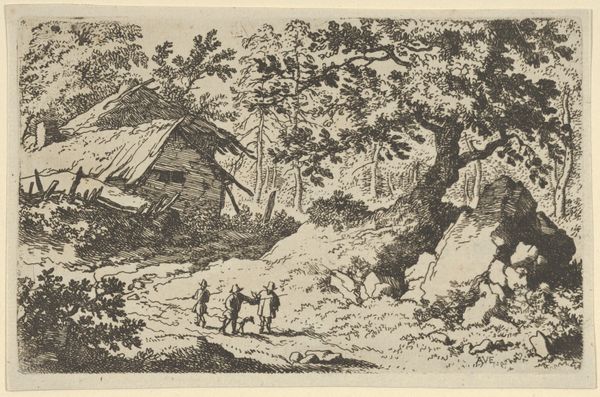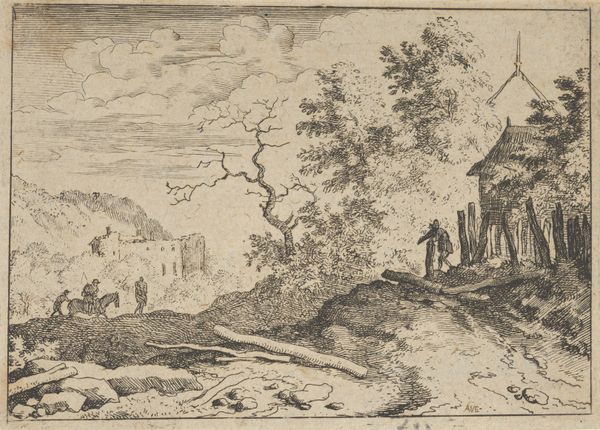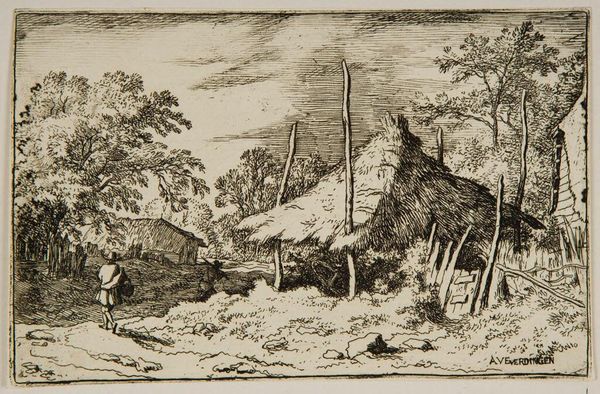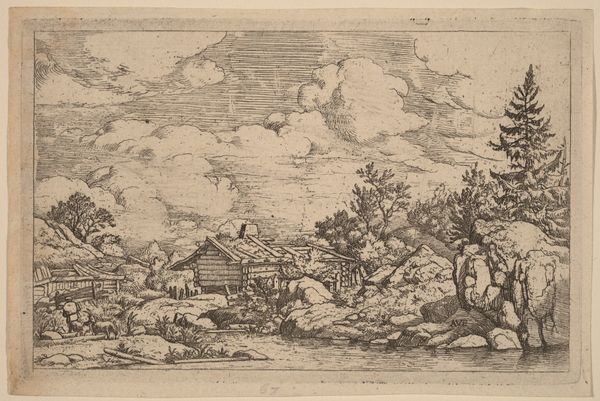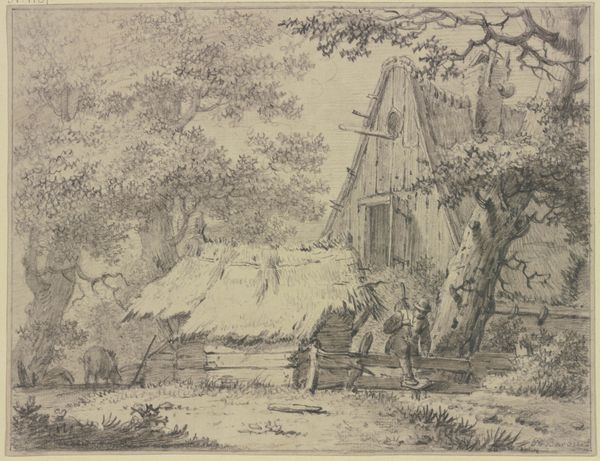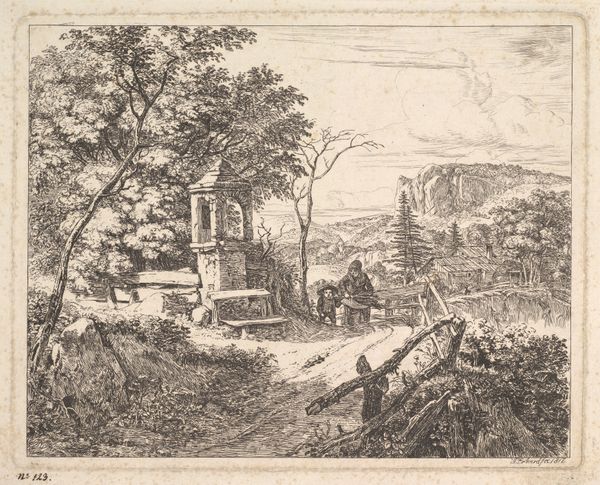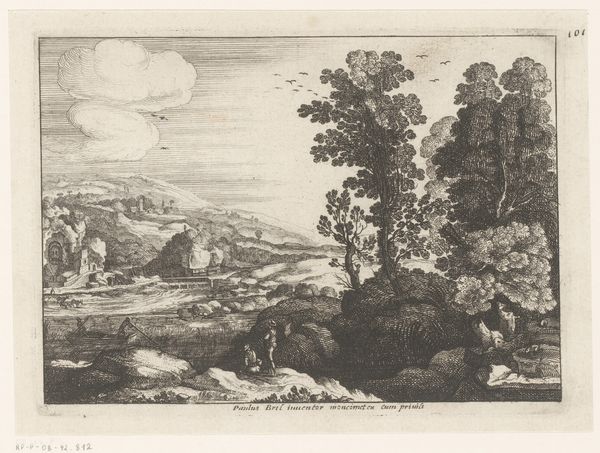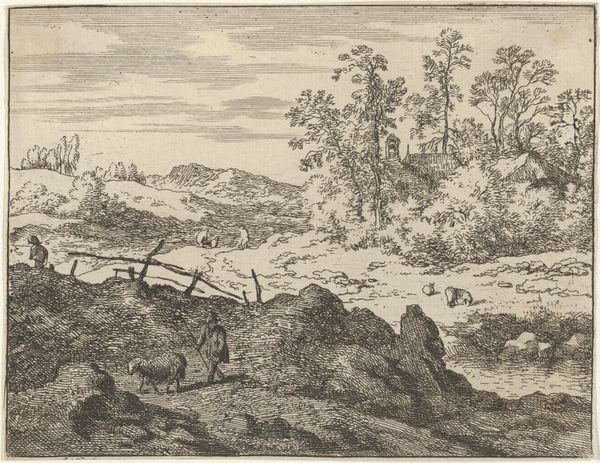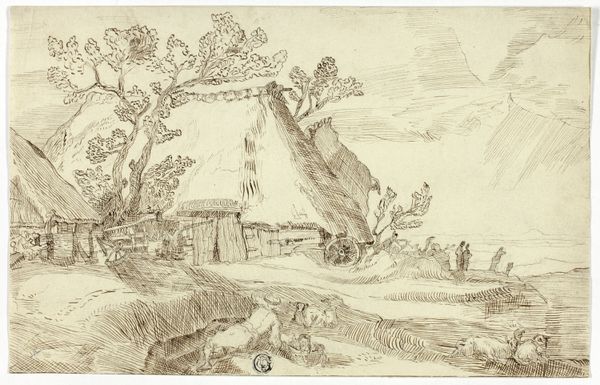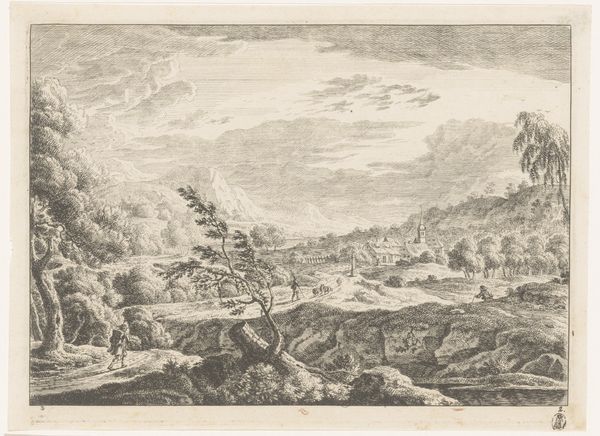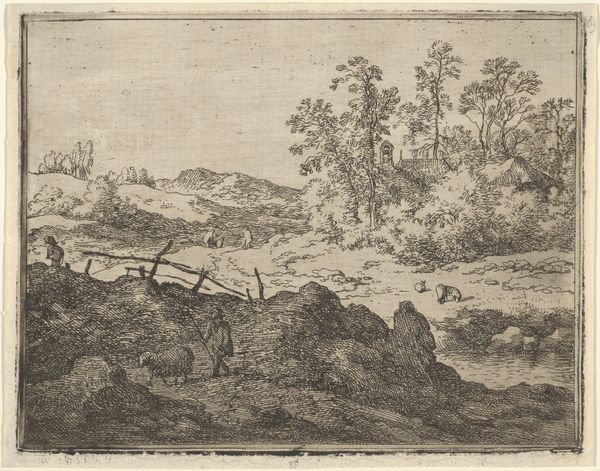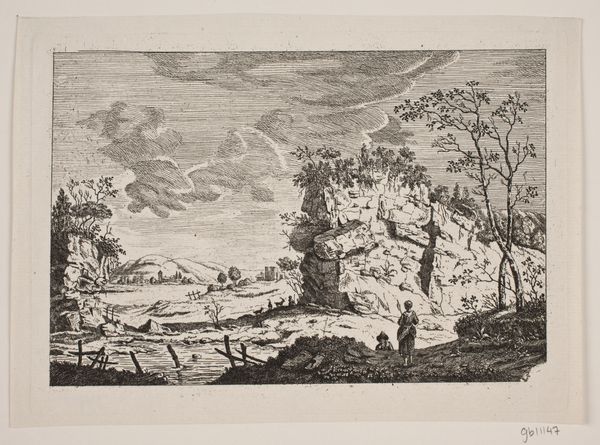
drawing, print, etching
#
drawing
#
dutch-golden-age
# print
#
etching
#
landscape
#
realism
Dimensions: Plate: 3 11/16 × 5 13/16 in. (9.3 × 14.8 cm) Sheet: 4 1/16 × 6 1/4 in. (10.3 × 15.8 cm)
Copyright: Public Domain
Curator: Welcome. Before us is Allart van Everdingen's etching, "The Wheel underneath the Haybarn," which the artist likely produced sometime between 1621 and 1675. Editor: It feels stark. The dense hatching creates deep shadows, almost obscuring the scene's overall composition. Curator: Everdingen's use of line is remarkable. Notice how the varied weights delineate form and texture, from the rough thatch of the haybarn to the delicate foliage. The linear precision is balanced by a textural density. Editor: But what kind of labor are we seeing here? What's implied about who works in the margins, who moves freely? This pastoral scene presents us with questions about social structures. Is this an idealized vision or a representation of the existing social hierarchy? Curator: From a formal standpoint, the perspective leads our eye deeper into the composition and the central haybarn form acts almost as a fulcrum around which the composition rotates. This creates a very visually pleasing composition. Editor: It's not about formal beauty here, it's about raising questions about social equity. Consider how the land shapes labor and shapes social relations, with implications about who can move in these spaces and the people tethered to those structures. Curator: Fair point, and the active presence of the laborer acknowledges the presence of the working class within this seemingly serene Dutch landscape. Perhaps Everdingen gestures to a subtle undercurrent of work in a landscape preoccupied with calm and quiet. Editor: Yes, let us keep questioning whose stories get foregrounded and whose are pushed to the margins in art history and its larger structures of thought. It's essential to have this awareness, even when contemplating a seemingly quaint landscape. Curator: A crucial observation—a piece's legacy should prompt these wider societal observations that extend beyond just artistic value. Editor: Indeed. Thank you for your time. Curator: And thank you, it was a fascinating exploration.
Comments
No comments
Be the first to comment and join the conversation on the ultimate creative platform.
